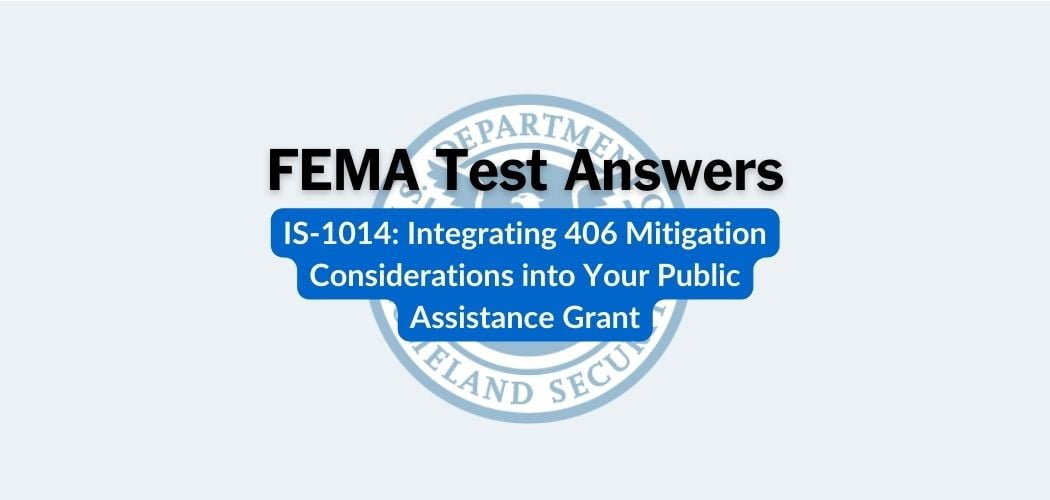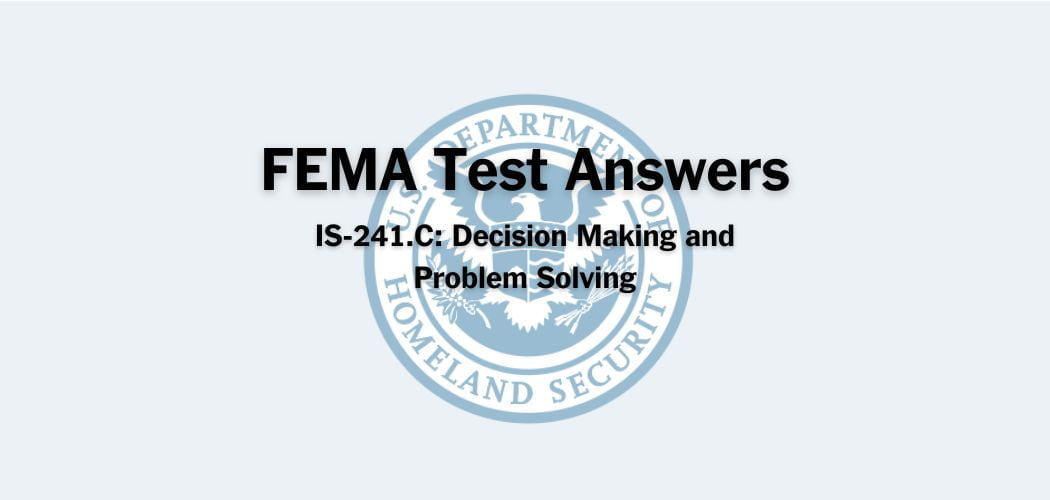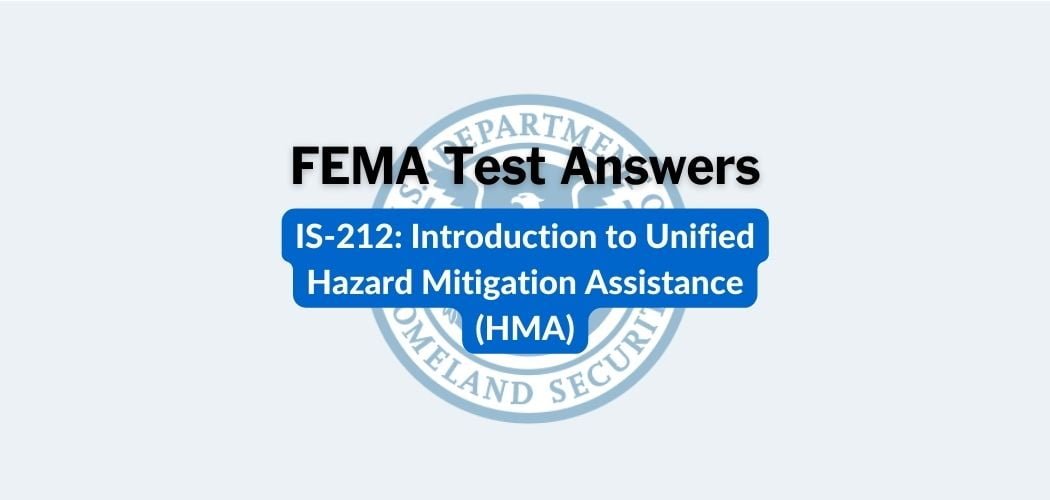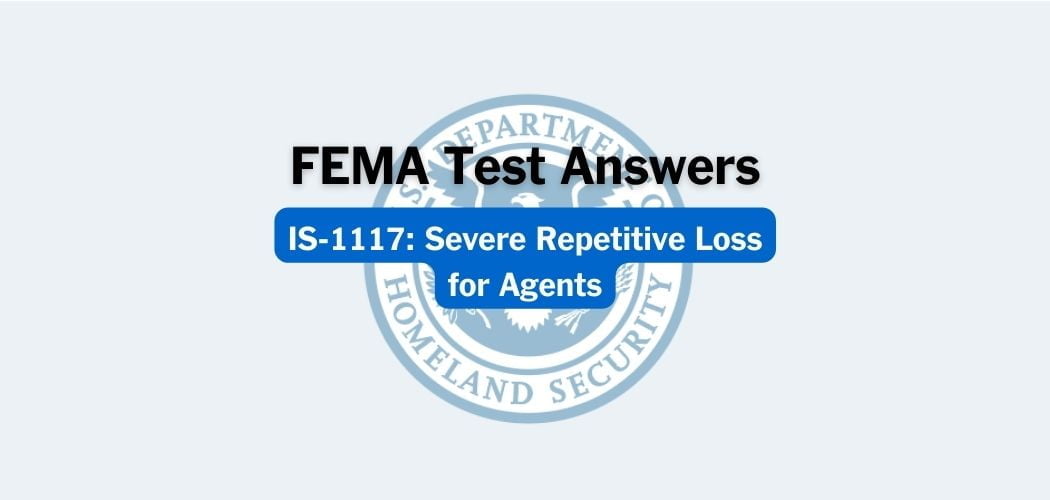Overview: The FEMA IS-660 course was published on 12/20/2011 to provide an introduction to the role of public-private partnerships in emergency preparedness and planning. The goal of this training is to establish a common vocabulary for public-sector agencies and private-sector organizations interested in utilizing partnerships to improve response, recovery, and resilience.
Primary audience: FEMA IS-660 is for state and local emergency management professionals and planners; personnel from response agencies; personnel from Federal, State, local, and Tribal government agencies that may participate in continuity planning efforts; members of public-private partnerships of collaborative relationships; and representatives from private-sector organizations involved in emergency management and/or continuity planning, and response actions.
FEMA IS-660 test answers
Each time this test is loaded, you will receive a unique set of questions and answers. The test questions are scrambled to protect the integrity of the exam.
Question 1. A city emergency management agency and a construction company have formed a public-private partnership. The construction company has provided the city with heavy machinery for hurricane and storm clean-up efforts over the years. However, the city does not know the full extent of machinery available to them in an emergency. How could this partnership be more successful?
A. The partnership can devote a full-time staff member to the partnership
B. The partners can form a database of resources from the construction company available for the city✅
C. The city can ask additional construction companies to join the partnership
D. The construction company can devote some machinery only for use in emergencies
Question 2. Which of the following activities directly support the nation’s emergency management system of preparedness, protection, mitigation, response, and recovery?
A. A bank and a local emergency management agency partner to provide mobile ATMs to hurricane victims.
B. All of the businesses and public agencies in the historic district of a city coordinate and practice earthquake evacuation procedures.
C. Local businesses sign up to be on a distribution list that sends out situation reports run by the city emergency management agency.
D. All of the above.✅
Question 3. Which of the following actions do the national response and recovery policies (National Response Framework, National Infrastructure Protection Plan, National Incident Management System) NOT provide guidance on?
A. How to work with the private sector to prioritize critical infrastructure
B. How to form a unified approach to emergency management
C. How to convince the private sector to contribute to partnerships financially✅
D. How the public and private sectors can take a proactive approach to form partnerships
Question 4. Which of the following is the best way to define the value of a public-private partnership?
A. The benefit of the partnership to FEMA
B. The degree to which the partnership is sustainable
C. How effective the partnership is at responding to emergencies
D. The benefit of the partnership minus the cost to all partners✅
Question 5. A public-private partnership is best defined as:
A. A collaborative relationship built on the needs and capabilities of the public and private sectors, and the two-way communication between those sectors✅
B. A relationship in which the private sector has a representative in the state, local or regional Emergency Operations Center (EOC)
C. A relationship in which the public sector can dictate the private sector’s actions during an emergency
D. A relationship in which the public and private sectors train together
Question 6. In order to be successful, all public-private partnerships should be:
A. Able to support partnership efforts through funding, facilities, and other resources✅
B. Open for any public or private partner to become a member
C. Prepared to respond to any emergencies in their geographic area
D. Staffed by a full-time employee from both the private and public sector
Question 7. Which of the following actions does NOT explain how FEMA works to build a whole community approach to emergency management?
A. Soliciting information and input on emergency preparedness, response, and mitigation from the private sector and general public
B. Engaging in public-private partnerships
C. Dictating a uniform set of preparedness standards for all local communities✅
D. Coordinating disaster response plans with state and local governments
Question 8. The ultimate motivator for the public and private sectors to engage in public-private partnerships is:
A. The benefit the community receives from unified emergency preparation, response, and mitigation✅
B. Financial incentives for partners
C. A seat at the table when forming emergency management policy
D. Access to partners’ resources
Question 9. FEMA aims to foster a ‘whole community’ approach to emergency management because FEMA recognizes that:
A. Working with the private sector can strengthen the resilience of the community and help it better prepare for, protect against, respond to, recover from, and mitigate against disasters✅
B. The public sector does not have any physical resources that can be used when preparing for or responding to disasters
C. Private businesses and organizations are widely unprepared for disasters
D. The private sector needs to be educated about how to prepare for and mitigate the effects of disasters
Question 10. In a flood-prone region, a partnership exists between public organizations, emergency management agencies, and private businesses which helps local businesses prepare, mitigate, and respond to flooding. You are an emergency management professional at a local pharmaceutical company, and you want to motivate other leaders in your company to join the partnership, even though you already have a robust emergency plan in place. How would you frame the benefit of joining the partnership to your company?
A. Your company could help restore services to the general public.
B. Your company could gain access to information and accurate and timely situation reports.✅
C. Your company could gain assistance in writing a joint emergency plan with the local emergency management agency.
D. Your company could gain financial assistance when disaster strikes.
Question 11. Which of the following national response and recovery policies contains emergency management guidance for the private sector?
A. National Response Framework (NRF)✅
B. National Infrastructure Protection Plan (NIPP)
C. National Incident Management System (NIMS)
D. All of the above
Question 12. A public-private partnership is creating a database of all resources available to the partnership. What is the best way this partnership can approach this resource-sharing activity?
A. Only one partner should control and create the database, in order to avoid confusion.
B. Partners should be encouraged to list in the database only physical resources they can commit in an emergency.
C. The partnership should create a formal resource-sharing plan, which establishes who has access to the database, and what is included in it.✅
D. The public agency should force the private sector to contribute to the resource database.
Question 13. How can public-private partnerships engage in preparedness in order to improve response to, recovery from, and mitigation of future incidents?
A. Work together to provide relief to disaster victims
B. Allow the private sector to have a seat in the EOC
C. Conduct joint training and exercises✅
D. Communicate the value proposition
Question 14. Fill in the blank: Formal information sharing between partners, such as private sector liaisons, ________.
A. Can help a partnership evolve, strengthen, and better respond to incidents.✅
B. Can only be considered formal when FEMA is directly involved.
C. Are always more effective and useful than informal information-sharing methods.
D. Are unnecessary when a relationship between partners has already been established.
Question 15. Which of the following statements about public-private partnerships is NOT true?
A. Public-private partnerships are based on the unique needs and capabilities of each partner
B. Public-private partnerships can be used to address resource challenges
C. Public-private partnerships are not the best approach for every situation
D. Public-private partnerships are always formed to address a specific incident✅
Question 16. The value proposition does NOT serve to:
A. Improve partner engagement
B. Clarify the common mission
C. Establish who is in charge of the partnership✅
D. Discuss any potential changes to the mission



